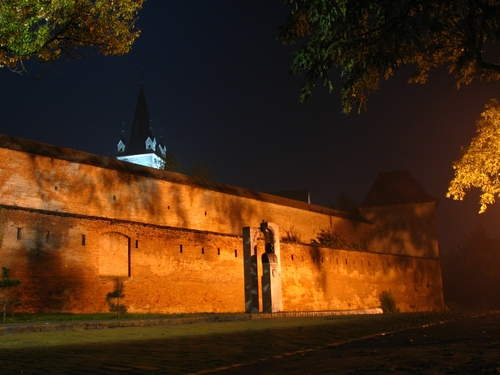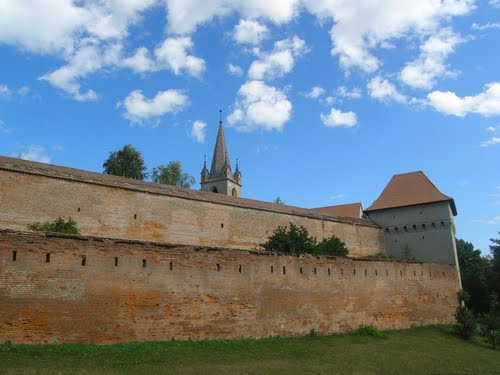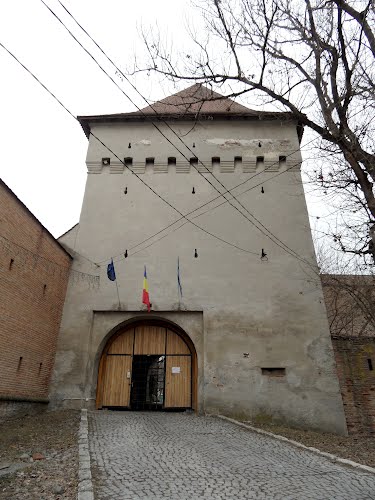In 1492 Prince Stefan Bathory ordered for a castle-fortress to be erected around the Franciscan monastery and church. A few of the original elements have been preserved, among them wall fragments on the Southern and Western sides, the tower on the Southern wing, attached to the furriers' bastion, and ruins of the South-Western tower, included nowadays in the tanners' bastion. The structure of these towers and the fact that they are square-shaped are indicative of a medieval type military architecture.
Six bastions were added during the reign of Gabriel Bethlen (1613 – 1629). The furriers' bastion, erected in 1628, was divided into four levels, the vast interior space allowing for several craftsmen's guilds to function here. In addition to the furriers' guild after which the bastion was named, the locksmiths' and goldsmiths' guilds also had their headquarters here.
Each bastion has firing holes for cannons on lower levels and for hand-held weapons in the walls of the first and second floors.
The erection of surrounding curtain walls took until the second half of the 17th century. The inside of the walls are provided with archways supported by posts that sustain the guard path that is on the same level as the firing holes. There may have been defense ditches on the outside which were covered in time as they were not used.
The fact that Transylvania lost its status of autonomous principality and became part of the Hapsburg Empire entailed a series of changes in what concerns military architecture. Modern, Vauban type fortresses were built in many Transylvanian towns such as Alba-Iulia, Oradea, Timisoara. The political changes in the principality were not without consequence to the fortress of Targu Mures. The houses inside the fortress were demolished to make place for the military headquarters and bakery. Following the restorations of 1962 – 1965, the walls and bastions reclaimed their initial form.












